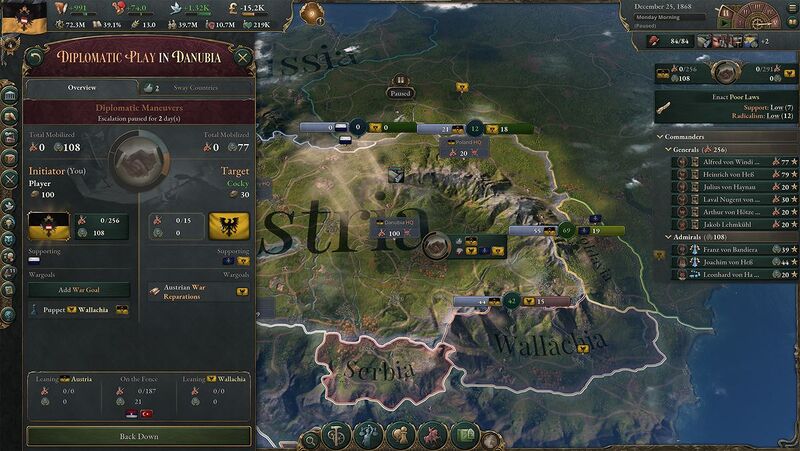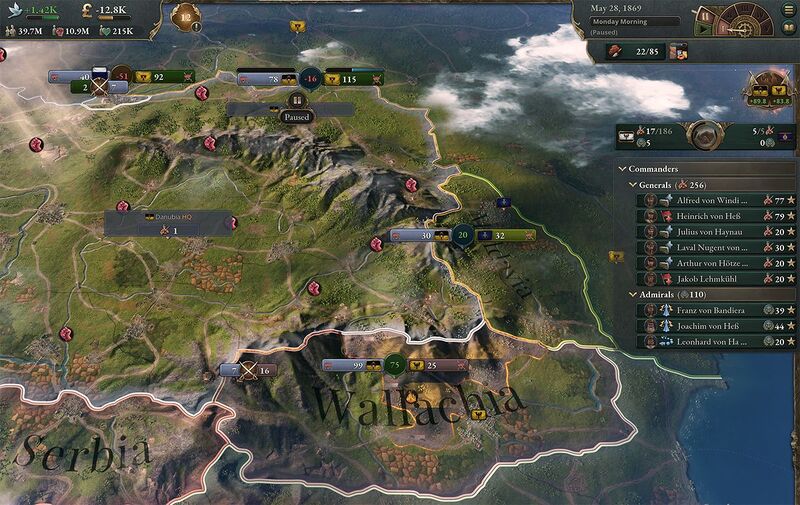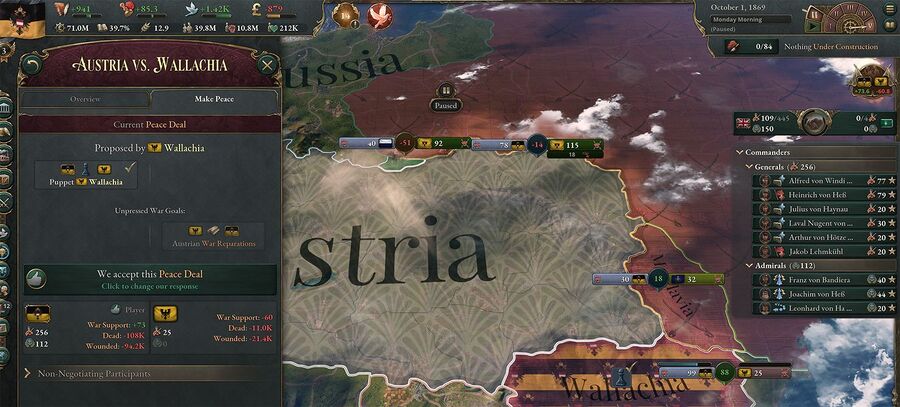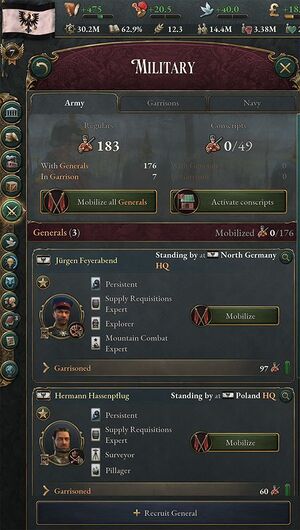When diplomacy fails in Victoria 3, it rests upon a nation's armed forces to achieve its geopolitical goals. In Victoria 3, all wars start after a diplomatic play has not been resolved peacefully and escalates to war. However, it is important to remember that mobilizing and deploying military forces during the diplomatic play is important both in projecting strength during the play (increasing the chance of the other side backing down without a war) and winning the war if it does break out.
Military structure
Armed forces in Victoria 3 are organised in four ways, and in every case it is important to be mindful of the HQ (there are separate HQs for each strategic region) they relate to:
- Battalions assigned to generals
- Flotillas assigned to admirals
- Unassigned Battalions
- Unassigned Flotillas
For battalions or flotillas to be given orders, they need to be under a general or admiral. Unassigned battalions are still useful, in that they will contribute to the defence of the strategic region in which they’re located, but unassigned flotillas will not take any part in a war. It will generally not make sense to have unassigned flotillas, as they cost upkeep but cannot be used in war. In the vast majority of cases, unassigned flotillas should be allocated to an admiral – the main exception to this are flotillas used purely for generating diplomatic interests.
During a diplomatic play
Once a diplomatic play has started, potential fronts will appear on the map, and generals can be assigned to these fronts. While it can be the case that there are more fronts than generals, bear in mind the opposing forces will have limited numbers of generals as well, and it is not unusual for peripheral fronts to have no forces assigned on either side. It takes time to move between fronts, and it is worth considering the war goals set during the diplomatic play when assigning generals, as controlling these will become important if war does break out (controlling war goals leads to the other side's war support dropping more quickly).

Similar to generals, once a diplomatic play has started, admirals can be assigned orders (except for naval invasion, which can’t be assigned until after war has broken out) to different sea nodes. These orders take time to prepare, so there can be value in positioning forces before war breaks out.
Once war breaks out
Once war breaks out, land warfare occurs along fronts, while naval warfare occurs in sea nodes. On a contested front where both sides have forces, there will be a series of battles, while naval warfare involves battles at each sea node. As would be expected, there are differences in the nature of land and naval warfare:
- Land warfare is about defending or capturing territory.
- Naval warfare is about attacking/protecting convoys (a disrupted supply network has economic costs, and will also impact on the morale of battalions on overseas fronts), invading, and defending against invasion. Note that while the enemy supply network can be disrupted, and invading armies can be blocked, it is not possible to intercept generals and their forces in transit between fronts.

As the war develops, both sides' war support will decline, based on a range of factors. There are some conditions that prevent war support from falling below zero, and it is worth being mindful of these, as if one side’s war support falls to -100, they will automatically capitulate and all of the war goals against them will be pressed. It is also possible to negotiate peace with some or none of the war goals pressed before this happens.

